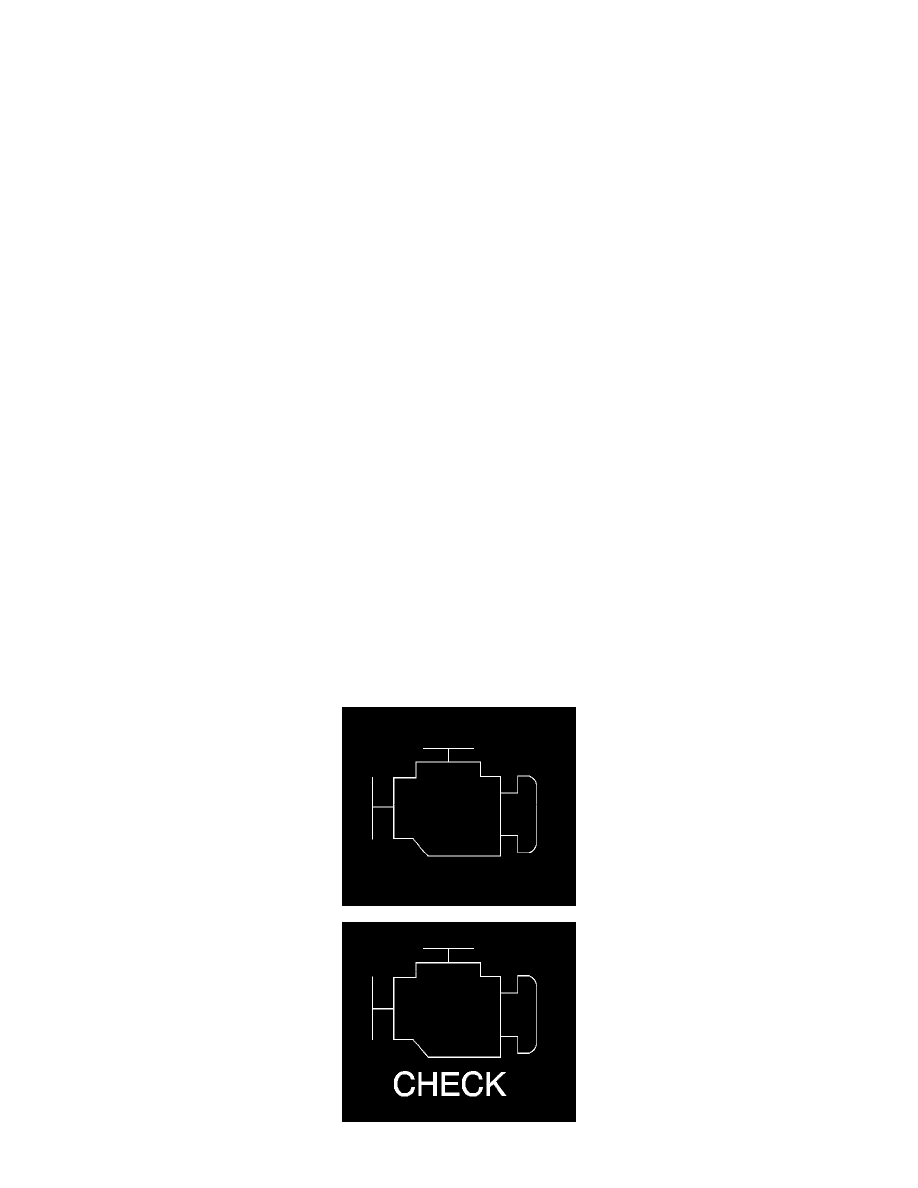Tahoe 2WD V8-4.8L VIN V (2004)

Engine Control Module: Description and Operation
Powertrain Control Module (PCM)
POWERTRAIN CONTROL MODULE (PCM) DESCRIPTION
POWERTRAIN
The powertrain has electronic controls to reduce exhaust emissions while maintaining excellent driveability and fuel economy. The powertrain control
module (PCM) is the control center of this system. The PCM monitors numerous engine and vehicle functions. The PCM constantly looks at the
information from various sensors and other inputs, and controls the systems that affect vehicle performance and emissions. The PCM also performs
the diagnostic tests on various parts of the system. The PCM can recognize operational problems and alert the driver via the malfunction indicator
lamp (MIL). When the PCM detects a malfunction, the PCM stores a diagnostic trouble code (DTC). The problem area is identified by the particular
DTC that is set. The control module supplies a buffered voltage to various sensors and switches. Review the components and wiring diagrams in order
to determine which systems are controlled by the PCM.
The following are some of the functions that the PCM controls:
-
The engine fueling
-
The ignition control (IC)
-
The knock sensor (KS) system
-
The evaporative emissions (EVAP) system
-
The secondary air injection (AIR) system (if equipped)
-
The exhaust gas recirculation (EGR) system
-
The automatic transmission functions
-
The generator
-
The A/C clutch control
-
The cooling fan control
POWERTRAIN CONTROL MODULE FUNCTION
The powertrain control module (PCM) constantly looks at the information from various sensors and other inputs and controls systems that affect
vehicle performance and emissions. The PCM also performs diagnostic tests on various parts of the system. The PCM can recognize operational
problems and alert the driver via the malfunction indicator lamp (MIL). When the PCM detects a malfunction, the PCM stores a diagnostic trouble
code (DTC). The problem area is identified by the particular DTC that is set. The control module supplies a buffered voltage to various sensors and
switches. The input and output devices in the PCM include analog-to-digital converters, signal buffers, counters, and output drivers. The output
drivers are electronic switches that complete a ground or voltage circuit when turned on. Most PCM controlled components are operated via output
drivers. The PCM monitors these driver circuits for proper operation and, in most cases, can set a DTC corresponding to the controlled device if a
problem is detected.
MALFUNCTION INDICATOR LAMP (MIL) OPERATION
The malfunction indicator lamp (MIL) is located in the instrument panel cluster. The MIL will display as either SERVICE ENGINE SOON or one of
the following symbols when commanded ON:
